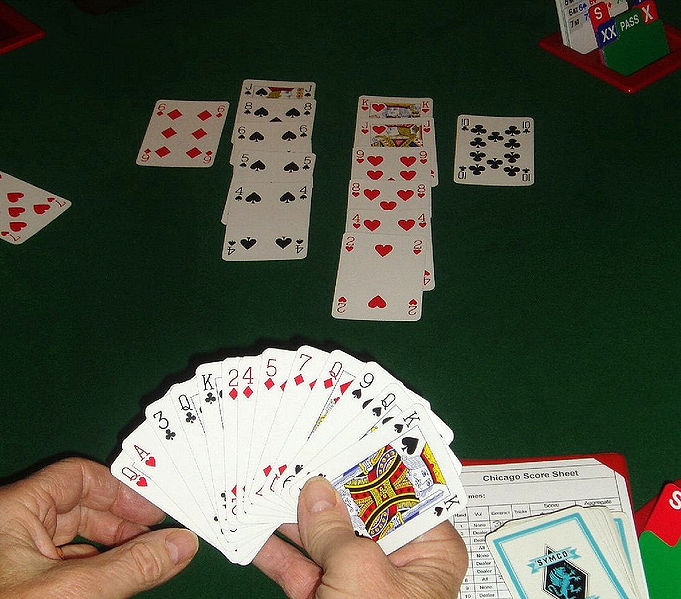Cathedral’s Bridge Club meets every Tuesday and Thursday at lunch in the Learning Center.
Bridge is a communication card game, where even the best players come across obstacles that challenge their skills. It is a game for four players, with two teams competing against one another. An average 52-card deck is used to play the game.
Bridge Club’s moderator, math teacher Mrs. Madelyn Trainor, started playing when her husband was stationed in the military, and she had just had her first baby. She said she and some other wives started a support group, and that was when she was introduced to the game.
The club consists of five students and the remainder are teachers. During the meeting, tables are set up for the students to play one another. No prizes are awarded to the winners, however. Everyone is still at a learning level and plays for fun.
“I love that every time I play and things don’t go the way I want them to, I think about my mistakes,” said Mrs. Trainor. “I think about what I could have done to communicate better with my partner, and how I could have improved my bidding.
Students interested in joining the Bridge Club may attend meetings in Ms. Trainor’s room on Tuesdays and Thursdays.
HOW BRIDGE IS PLAYED
The game has four phases: dealing the cards, the bidding, playing the hand, and scoring the results. The main objective of the game though is to bid and play.
The dealing determines the partnerships or teams: the two players with the highest cut playing against the two with the lowest cut. The one player playing with the highest cut is the first dealer.
The bidding starts with the dealer. The bidding then continues around with each player making a call, to find out which team will “contract” to take the most tricks.
Both sides compete to decide the trump suit and the number of tricks expected. Tricks win by getting high cards and trumps. The side that bid it will get a score when the contract is made, which is the very last bid.
The play is where the hand of the declarer is displayed facing up on the table after the first lead is made by the member of the other side. The “floating dummy” on the left makes sure partners are playing honest.
After all the tricks have been played, the score is determined by comparing the number of tricks taken by the declaring team with that intended in the contract.





















































